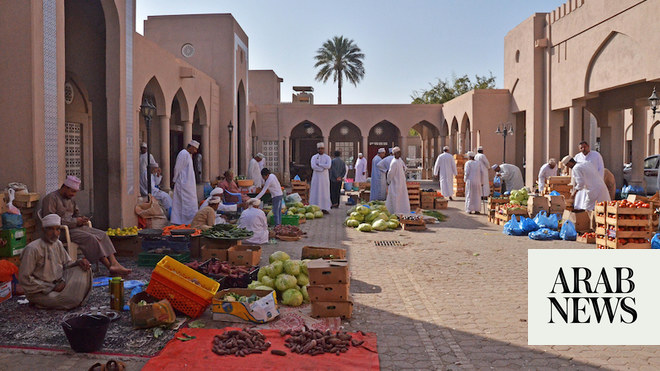Omans Foreign Reserves Increased By 9% In May

RIYADH: Oman’s foreign assets reached 7.37 billion Omani rials ($19.1 billion) by the end of May, reflecting a 9 percent increase from the previous year and indicating economic growth and stability.
This surge underscores a solid buildup of reserves, positioning Oman well in the global financial arena.
Local liquidity also saw a significant uptick, reaching 23.7 billion rials, which represents an 11.5 percent increase compared to the same period in the previous year, according to preliminary data released by the National Center for Statistics and Information.
This growth in liquidity suggests a vibrant and expanding economic activity, with more funds circulating within the economy.
Adding to the positive economic indicators, the real effective exchange rate of the Omani rial improved by 2.1 percent, climbing to 117.6 points. This index measures the currency’s value relative to a basket of major currencies, adjusted for inflation, and its increase signifies enhanced competitiveness and purchasing power on the international stage.
In contrast, the total currency issued by the central bank saw a slight decrease of 1.9 percent, falling to 1.63 billion rials. This reduction in currency issuance may reflect changes in demand or adjustments in monetary policy.
Meanwhile, the narrow money supply, encompassing currency outside the banking system and local currency demand deposits, grew by 7.3 percent, reaching 6.28 billion rials. This rise indicates a higher level of liquidity, potentially boosting consumer spending and investment within the country.
The International Monetary Fund, following a visit in May led by Cesar Serra, mission chief for Oman, affirmed the resilience and stability of the nation’s banking sector. The IMF’s assessment praised the sector’s strong capital position, ample liquidity buffers, and high asset quality, reinforcing the overall positive economic outlook.
These developments suggest a stable and improving Omani economy, with growing reserves, increasing liquidity, a competitive exchange rate, and a steady banking sector.
Private sector deposits in commercial banks and Islamic windows grew to approximately 20.4 billion rials by the end of May, a 14 percent increase from 17.9 billion rials a year earlier.
Total loans and financing from these institutions rose by 3.2 percent, reaching 31.08 billion rials, up from 30.12 billion rials the previous year.
The average interest rate on loans increased by 3.3 percent, reaching 5.62 percent at the end of May.
Saudi Arabia Poised To Become Mideasts Silicon Valley, Say Experts
RIYADH: Saudi Arabia is rapidly transforming into a regional technology hub, drawing comparisons to Silicon Valley, than... Read more
How Saudi Entrepreneurs Are Navigating The Shift To Public Markets
RIYADH: As startups approach the critical stage of an initial public offering, one of their biggest challenges is the tr... Read more
UK-Saudi Trade Ties Deepen As 50 British Firms Set Up Regional HQs In Kingdom
RIYADH: The strong investment growth in Saudi Arabia’s economy has led 50 British companies to set up regional headqua... Read more
IMF Warns Of Economic Slowdown, But Rules Out Global Recession
WASHINGTON: Rising trade tensions and sweeping shifts in the global trading system will trigger downward revisions of th... Read more
Libyans Grapple With Fresh Currency Devaluation
TRIPOLI: Already worn down by years of political turmoil and economic hardships, Libyans are now facing a sharp deterior... Read more
Closing Bell: Saudi Main Index Closes In Red At 11,502
RIYADH: Saudi Arabia’s Tadawul All Share Index dipped on Thursday, losing 81.44 points, or 0.7 percent, to close at 1... Read more

